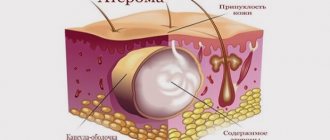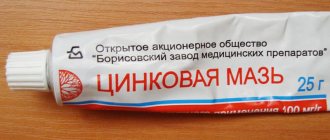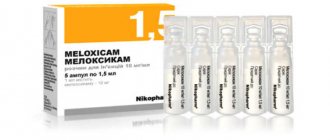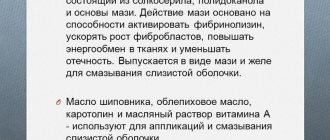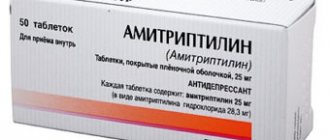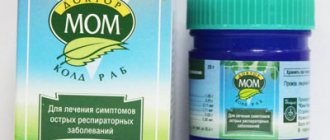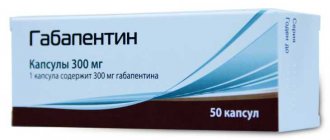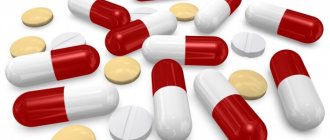"DICLOFENAC": composition
- The active ingredient is diclofenac. It belongs to non-steroidal anti-inflammatory pharmaceuticals and is a derivative of phenylacetic acid. Has analgesic and antipyretic effects.
- Additional substances:
- hydrophilic ointment base polyethylene oxide-400, polyethylene oxide-1500/4000;
- organic solvent propylene glycol;
- transdermal component that enhances the effect of the main substance – dimethyl sulfoxide.
It is produced in two forms - 1% and 2%, depending on the volume of active substance content per gram - 10 mg and 20 mg, respectively. Sales are made in tubes with a dosage of mainly 30 grams. The cardboard package contains instructions for using diclofenac ointment.
Components
Diclofenac in the form of a gel is packaged in aluminum tubes of 30, 50 or 100 g. They are placed in a cardboard package with an annotation. The active substance is represented by diclofenac sodium, its dosage in the drug is 1, 3 or 5 percent.
The following additional components were used in the preparation of Diclofenac gel:
- sodium benzoate;
- carbomer;
- trolamine;
- disodium edatate;
- dimethyl sulfoxide;
- propylene glycol;
- macrogol;
- purified water.
Diclofenac gel is produced by many Russian pharmaceutical companies, which is why the components in the product may differ slightly. For example, the gel from the Synthesis company contains lavender ether.
How does it affect the body? (Pharmacodynamics)
It has local analgesic and anti-inflammatory effects. Reduces tissue temperature over the site of inflammation. Less than 6% of the active component enters the bloodstream from the skin. 94% remain in the soft tissues, joints, and around the diseased joint. The medicine penetrates through the skin into the layers of soft tissue that are located underneath it. When accumulated, it neutralizes the work of the COX enzyme, which helps the body convert arachidonic acid into prostaglandins. Prostaglandins, accumulating at the site of inflammation, cause increased sensitivity of pain receptors, a local increase in temperature, and severe symptoms of inflammation. When their number decreases, swelling subsides, pain and redness disappear. Relieves pain at rest and morning stiffness. The course of treatment helps to increase the range of motion in the affected joint.
Dosage and rules of use
Diclofenac ointment and gel are used purely externally, applying a thin layer to the skin of the area where pain is felt, swelling or inflammation is present. For adults and children over 12 years of age, a single dose is only 2 g. In terms of volume, this dose can be compared to the size of a cherry or it is a strip of product 4 cm long. Diclofenac gel and ointment are used a maximum of three times a day and the daily dosage of the product should not exceed 8 G.
If we talk about children 6-12 years old, then 1 g of gel or ointment for one application will be enough for them. Visually, this dose will be comparable to a strip of about 2 cm. Repeat the procedure no more than 2 times a day. Upon completion, you must wash your hands thoroughly with soap, preferably under running water. But this recommendation is inappropriate if the hands are the area of therapy (for example, with pathologies of the finger joints).
Often, Diclofenac in the form of an ointment is used to relieve bruises, sprains, osteochondrosis, radiculitis and even hemorrhoids . For bruises and sprains, Diclofenac ointment is applied according to the standard regimen (2 g 3 times a day), which helps eliminate pain, swelling and possible inflammation. In a situation with osteochondrosis, it is used 2-4 g 2-3 times a day. This makes the affected joints easier to work with and helps increase range of motion.
For radiculitis, the ointment is applied according to the same scheme as in the previous case, and the positive effect of Diclofenac is usually noted in eliminating stiffness in the morning. In addition, Diclofenac ointment can be used for hemorrhoids. In such circumstances, the anal area is treated with a thin layer of ointment (up to 2 g), which promotes an analgesic and antiseptic effect, and removes possible inflammation.
Duration of treatment
The duration of therapy with ointment, gel or other external form of Diclofenac will be related to the severity of the disease, as well as the results of treatment. However, it is advisable that the duration of therapy with ointment or gel should not exceed 14 days . If after this period there is no improvement, then you should urgently visit your doctor and discuss with him the appropriateness of further use of Diclofenac.
When using the product for too long or when treating large surfaces of the body, there is a possibility of certain systemic side effects. In particular, an increase in the activity of liver enzymes is likely. That is why, to minimize these effects, it is recommended to use the medication in the smallest dosage and for a fairly short period of time.
DICLOFENAC ointment - what helps?
Course treatment is prescribed for:
- pathological processes in the joints, which are accompanied by inflammatory, degenerative-dystrophic changes (osteochondrosis, osteoarthritis, periarthropathy and others);
- lesions of soft tissues due to rheumatic processes;
- injuries to joints or soft tissues (bruises, sprains, ligament ruptures, etc.);
- inflammation of periarticular tissues;
- pain after straining muscles and ligaments;
- postoperative pain.
Contraindications
- decrease in the number of any blood cells;
- erosions, ulcers, perforation of walls in any part of the gastrointestinal tract;
- allergies to any drugs from the NSAID group, especially aspirin;
- pregnancy;
- breast-feeding
- age up to 12 years.
During use, care must be taken to ensure that the substance does not get on the open wound surface (apply around the surgical wound, not on it), or mucous membranes. Avoid contact with eyes.
Side effects
- burning;
- erythema;
- irritation at the idea of redness or rash;
- if accidentally ingested, there will be systemic side effects.
Indications and contraindications
In most cases, patients use the gel without consulting a specialist. But this is not entirely the right decision, since if it is used incorrectly, side effects may occur. Therefore, special attention should be paid to indications and contraindications.
The indications are as follows:
- rehabilitation after bruise and sprain;
- radiculitis and osteochondrosis;
- diseases of soft tissues of rheumatic type;
- muscle pain.
There are a number of restrictions under which the use of such a drug for therapy is not recommended. Elderly people can use the gel only after prior consultation with a specialist. With extreme caution, the medicine can be used by patients with stomach ulcers and chronic heart failure.
Absolute contraindications include:
- hypersensitivity to the main or auxiliary components;
- tendency to urticaria, asthma or acute rhinitis;
- pregnancy in the third trimester;
- age up to 6 years;
- lactation.
The gel can only be used for external use. If it accidentally gets inside the body, you should immediately rinse your stomach and take the sorbent.
"DICLOFENAC" (ointment): instructions for use
Use no more than two to three times a day. The maximum permissible daily dose is no more than 8 grams. There is no need to rub until completely absorbed.
How to take it correctly?
- 2-4 grams are applied with clean hands to clean skin, cleared of previous dressings.
- One centimeter of the substance squeezed out of the tube approximately corresponds to one gram of the substance.
- Rub over the entire area of inflammation.
- Wait until completely absorbed.
- After applying, be sure to wash your hands.
Indications for use
What does Diclofenac ointment-gel help with:
- rheumatic diseases of soft tissues (bursitis, tendovaginitis, damage to periarticular tissues);
- post-traumatic inflammatory processes of joints;
- post-traumatic inflammation of soft tissues;
- articular syndrome due to rheumatism;
- rheumatoid and psoriatic arthritis;
- radiculitis;
- osteoarthritis;
- lumbago;
- sciatica;
- bruises and dislocations.
"DICLOFENAC" (ointment): price in pharmacies
How much diclofenac ointment costs is influenced by several factors simultaneously: the country of the manufacturer, the markup of the pharmaceutical chain selling the drug, the region in which the sale is made.
How much does Diclofenac (ointment) cost?
Like the gel, you can purchase a pain reliever without a doctor's prescription. The price of diclofenac ointment in pharmacies depends on the volume and percentage of the active ingredient. So, for example, 30 grams of a 1% composition will cost:
- ru – 51 rubles;
- Dialogue – 24 rubles;
- Pharmacy – 36 rubles.
For 30 grams of 2% domestic product you will have to pay:
- RU – 34 rubles;
- Dialogue – from 20 rubles;
- Pharmacy – 25.80 rubles.
Possible adverse reactions
Under the influence of Diclofenac in gel form, the development of systemic and local side effects is observed in rare cases. As a rule, their manifestation is caused by non-compliance with the dosage of the drug or the use of the drug to treat a large area of the skin.
Most often this leads to the following negative reactions:
- from the immune system: generalized skin rashes, allergic reaction in the form of nettle fever, angioedema;
- from the respiratory system: bronchial spasms, attacks of suffocation, feeling of lack of air during inspiration;
- from the skin: erythema, photosensitivity, signs of contact dermatitis - rashes, papules, swelling, vesicles, peeling, itching, burning.
DICLOFENAC - ointment or gel, which is better?
The ointment has a thicker base than the gel, it is absorbed more slowly and is more effective. In many cases, to enhance the effect of the gel, support with the same drug is required, but only in tablet form, in suppositories or intramuscular injections. Regarding whether diclofenac ointment or gel is better, we can say that the difference lies in the fact that the former uses fat as a base, while gels are made on a water basis.
As a result, in the first option, the active component is absorbed more slowly, while simultaneously softening, moisturizing the skin and relieving the first superficial symptoms of inflammation. The gel, being absorbed faster, penetrates into the deeper layers of inflamed tissue. When accumulated in soft tissues, only 6% of the active component contained in the drug enters the bloodstream, so gel and ointment are often used in the treatment of various forms of damage to the locomotor system.
Analogs
If for some reason Diclofenac is not suitable for therapy, then it can be replaced with any other medicine that has a similar effect, but a different composition.
There are a large number of analogues. The most effective include:
- Voltaren. This imported drug is well absorbed into tissues, so it can be used to treat deep injuries. Diclofenac can only be used for superficial damage.
- Fastum gel. The medicine is distinguished by its rapid medicinal effect and high price. Suitable for healing serious injuries.
- Nise. Compared to Diclofenac, Nise is a less toxic drug.
- Diclak gel. A product with a similar effect and composition. The only difference is in the manufacturer.
Before using an analog product, you should study its composition and contraindications, as they may differ from Diclofenac. Most drugs have the same effect, but are more expensive.
"DICLOFENAC" (ointment): analogues
It is quite possible to replace diclofenac ointment with analogues based on the same active substance. Available in a similar form:
| Ortofen is a Russian fat-based medication for external use. Used as an analgesic, anti-inflammatory and antipyretic agent for injuries and rheumatism. Price – from 112 rubles. |
| Diclofenac-Akrikhin is a domestic product operating on the basis of the same main component. Relieves pain syndromes, swelling and inflammation during injuries and in the postoperative period. Price – from 88 rubles. |
You can also replace the drug with analogues with a different composition:
| Butadione is a Hungarian non-steroidal anti-inflammatory drug based on phenylbutazone. It is used externally to relieve pain and inflammation from burns, inflammation, injuries, arthritis, etc. Price – from 172 rubles. |
| Indomethacin is a domestic product based on the active substance of the same name. It is used externally to relieve inflammation and pain due to injuries, diseases of the musculoskeletal system and soft tissues. Price – from 75 rubles. |
Restrictions on use
Gel with diclofenac is contraindicated for use if a person has hypersensitivity to any components of the drug. It is strictly forbidden to use this product with the “aspirin triad”. That is, against the background of the use of acetylsalicylic acid or NSAIDs, bronchial asthma, urticaria, and acute rhinitis may develop. In addition, the use of this medicine by late pregnant women, breastfeeding women, and children under 6 years of age is prohibited.
Gel treatment of skin areas where there are microtraumas - abrasions, cuts, burns, cracks - is prohibited.
"DICLOFENAC": reviews
An indispensable item in the home first aid kit. We use all forms of release. Ointment helps relieve back pain; we also use it if joints hurt. Injections are also great for joint pain - my wife gives courses of them to her parents (a course of 5 injections for 10 days, every other day). It is important when using the drug to use something that supports the gastrointestinal tract. By the way, I’ll share my experience: injections relieve fever faster when none of the usual remedies help.
When I tore a muscle in my leg, there was terrible pain, so my partner helped me relieve the pain with this ointment and managed to avoid inflammation. A very powerful drug, but I used ointment, and only pills and injections helped my friend with his chondrosis. The only other thing worth noting is that the drug has serious contraindications, and the doctor strictly told me to do it according to the instructions and not to exceed the dosage. Now I always have it in my home medicine cabinet!
Pharmacological action of the drug
Diclofenac, which is an active ingredient, has an anti-inflammatory and pronounced analgesic effect, and is characterized by an anti-edematous effect.
The drug eliminates joint stiffness, providing painless motor activity. The drug prevents the synthesis of prostaglandins, which, in turn, allows you to completely block the inflammatory process. Both cream and gel are characterized by excellent penetrating ability.
The use of this drug makes it possible to get rid of swelling and pain in the joints and muscles. As a result of using the product, it is possible to achieve a significant anti-inflammatory effect and improve joint mobility.
Subject to the conditions for use of the drug, the absorption rate of diclofenac is no more than 6%.
Main characteristics of Diclofenac-Akrikhin
Diclofenac-Akrikhin is an anti-inflammatory drug for topical use.
| Tradename | Diclofenac-Akrikhin |
| International name | Diclofenac |
| Release form |
|
| Compound | Diclofenac sodium is the main component in all forms. Additional in the ointment: dimethyl sulfoxide (dimexide), macrogol, propylene glycol, succinic acid. Additional in the gel: carbomers, cetostearomacrogolg, cocoyl caprylocaprate, diethylamine, isopropanol, liquid paraffin, oleyl alcohol, eucalyptus flavor, propylene glycol, butylated hydroxytoluene, purified water. Additional tablets: lactose monohydrate, povidone, hydroxypropyl methylcellulose, microcrystalline cellulose, magnesium stearate, colloidal silicon dioxide, stearic acid. |
| Pharmacokinetics | When applied to the skin, the drug is absorbed into the systemic circulation by no more than 6%. The main part of the drug reaches the synovial fluid, subcutaneous fat slows down the absorption of the drug into the underlying tissues. In the systemic circulation it is metabolized in the liver and excreted through the kidneys; the effect of the ointment begins within 20-30 minutes. With a course of use, penetration into the joint improves and the concentration in the synovial fluid is consistently higher than in plasma and does not accumulate. The half-life from joint fluid is 3-6 hours, from plasma – 2 hours. The maximum concentration in the joint is achieved after 3-4 hours. When taking tablets orally, it binds to blood proteins by 99%, penetrates into the synovial fluid of the joint and remains here in a significant concentration for 12 hours. |
| Pharmacodynamics | Inhibits cyclooxygenase 2, which causes a blockade of the synthesis of anti-inflammatory substances: thromboxane A2, leukotrienes, inflammatory prostaglandins, prostacyclin. Platelet aggregation slows down and the release of enzymes from lysosomes is suppressed. In the affected area, the rate of migration of immune cells in the inflammatory response slows down. With long-term use, it slows down the synthesis of proteoglycan (a component of cartilage tissue) in the joint. |
| Best before date | 4 years from the date of production, store at a temperature no higher than 15 degrees out of the reach of children. The tablets are good for 3 years at a temperature not exceeding 25 degrees. |
| Conditions for dispensing from pharmacies | Over the counter |
| Manufacturer | Open Joint Stock Company "Chemical and Pharmaceutical Plant "AKRIKHIN" Russia, Moscow region. |
Analogues of Diclofenac ampoules
Quite often, patients are prescribed Diclofenac by injection. A well-chosen replacement for Diclofenac injections is of great importance, since this form of release is designed to have a quick effect, providing rapid relief.
Amelotex
Instead of Diclofenac, the patient may be offered Amelotex. It has another active ingredient – meloxicam. It also belongs to the group of NSAIDs. Amelotex is indicated for use in the following cases:
- osteoarthritis;
- rheumatoid arthritis;
- Bekhterev's disease;
- inflammatory and degenerative diseases of the joints, accompanied by pain.
It has contraindications similar to Diclofenac, but its negative effect on the digestive tract is less pronounced, so it is considered safer. Amelotex in ampoules of 1.5 ml (15 mg) costs 347 rubles. for 5 pieces.
Genitron
The Ukrainian drug Genitron also contains meloxicam, therefore it has a similar effect on the patient’s body as Diclofenac, but is not its structural analogue. 1 ml of injection solution contains 10 mg of meloxicam. This analogue in ampoules costs 569 rubles. for 5 ampoules.
Arthrozan
Artrosan is produced in the Republic of Bashkortostan. Its active ingredient is meloxicam. Intramuscular administration is indicated only during the first few days of therapy. Subsequently, treatment is continued with the use of oral dosage forms. Artrosan solution for intramuscular administration 6 mg/ml in ampoules of 2.5 ml costs 235 rubles. (3 pieces).
Artoxan
Analogues of Diclofenac in injections also include Artoxan. It is produced by a pharmaceutical company in the UK. Its active ingredient is tenoxicam (NSAID) with a pronounced analgesic and anti-inflammatory effect. Artoxan is available in the form of a lyophilisate for the preparation of a solution for intravenous and intramuscular administration. For 3 bottles of 20 mg each you will have to pay 590 rubles.
Movalis
The Austrian analogue of Diclofenac in ampoules is Movalis. Each 1.5 ml ampoule contains 15 mg of meloxicam. Movalis is the original drug, and all other available products with this active ingredient are generics. This explains the cost of the drug. For 5 ampoules of Movalis, the patient will have to pay 890 rubles.
In what cases is it used?
Diclofenac ointment is prescribed to patients for the treatment of all inflammatory and degenerative diseases of the musculoskeletal system. Indications for use are:
- rheumatoid, reactive, psoriatic, gouty, infectious arthritis;
- deforming osteoarthritis;
- ankylosing spondylitis;
- bursitis, synovitis;
- tendonitis, tendovaginitis;
- epicondylitis, periarthritis;
- contractures of any localization;
- rheumatism;
- cervical, thoracic, lumbosacral osteochondrosis.
The drug is included in therapeutic regimens for injuries - fractures, dislocations, muscle sprains, complete or partial ruptures of ligaments and tendons. It is used in the postoperative period to relieve pain.
Side effects
The use of diclofenac-based ointments is associated with the risk of unwanted effects. The drug has high bioavailability (up to 98%), non-compliance with the recommendations prescribed in the instructions leads to an increase in the content of the active substance in the blood. At increased concentrations, diclofenac begins to have a toxic effect, which is expressed in the following manifestations:
- Skin. An erythematous (bright red) and urticarial (small papules) rash appears on the skin, a feeling of irritation and tingling. Less commonly observed is local swelling of the mucous membrane and subcutaneous tissue, increased pain, generalized itching, eczema, and increased sensitivity to ultraviolet radiation.
- Digestive system. Paroxysmal pain in the abdomen and pelvic area, vomiting, diarrhea, bloating. In rare cases - gastric ulcers, destruction of hepatocytes under the influence of diclofenac (toxic hepatitis).
- Nervous system. Pain in the head, rapid and increased fatigue, sleep disturbance up to its loss, psychasthenia, disturbance of taste.
- Sense organs. Double visible image, decreased visual acuity, impaired peripheral vision, tinnitus.
- Urinary system. Damage to the glomerular apparatus of the kidneys, increased protein content in the urine.
- Circulatory system. Decreased levels of platelets, hemoglobin, and leukocytes in the blood.
- The cardiovascular system. Chest pain, increased blood pressure, rapid heartbeat.
Can the gel be used during pregnancy and lactation?
The use of external means "Diclofenac" is contraindicated during pregnancy and breastfeeding. As doctors explain, the risk to the fetus increases in the third trimester. For the first 6 months you can use the product, taking all precautions. If there is an urgent need to use the gel during pregnancy and lactation, then reduce the dosage. Stop breastfeeding for the duration of treatment.
Medicinal effect
Based on the instructions, diclofenac-based ointments have an analgesic (pain-relieving) and anti-inflammatory effect. They inhibit cyclooxygenase, as a result of which the synthesis of prostaglandins - a pain mediator, thromboxanes, and substances that increase blood pressure - is disrupted. Some ointments have an anti-allergenic effect when used for a long time. They normalize the content of connective tissue, which is a lubricant in joints.
Diclofenac-based ointments relieve pain both during activity and at rest. They reduce stiffness in movement that occurs in the morning, relieve swelling of the joints, and increase motor ability. In case of inflammation resulting from injury or surgery, it relieves spontaneous pain and reduces swelling at the wound site.
Ointments with diclofenac as an active substance are significantly superior in anti-inflammatory activity to drugs based on butadione, ibuprofen, and acetylsalicylic acid. After application to the skin, the analgesic effect of various ointments is achieved within 30-60 minutes and lasts for 3-5 hours.
What is Diclofenac gel used for?
"Diclofenac" is indispensable for sudden pain syndromes in muscles and joints, in the neck and spine, in the lumbosacral region. It is also prescribed by a doctor for chronic pain.
The main active component of the drug, diclofenac sodium, has a local anesthetic effect on the area of spasm. As a rule, it is prescribed in complex therapy with tablet forms. Diclofenac gel is well absorbed, does not leave greasy marks on clothes, is convenient and easy to use.
Diclofenac gel - analogues
Modern medicine is ready to offer alternative treatment methods if the one proposed does not suit you. The same applies to medicines. There are analogues of Diclofenac gel, which also actively combat discomfort in muscles, diseases of soft tissues and joints, and relieve swelling. Among the most popular, which have received positive reviews, but differ in price, are the following:
- Voltaren;
- Diklak;
- Diclovit;
- Ortofen;
- Diclogen.
Indications
Ointment is prescribed in case of:
- diseases and traumatic injuries of muscles, ligaments, spine, joints and periarticular tissues;
- degenerative and rheumatic lesions of the musculoskeletal system;
- inflammatory diseases of the thyroid gland (mild forms);
- pain and swelling due to bruises and overload.
The ointment is prescribed for inflammatory diseases of the thyroid gland.
Also used for:
- dystrophic disorders in articular cartilage and intervertebral discs; inflammation of tendons, periarticular bursae;
- acute pain in the lower back and other parts of the back;
- damage to peripheral nerves;
- inflammation and soreness in the muscles; tendonitis.
The product reduces pain, improves mobility in the areas of application, and does not affect the progression of the disease.
Diclofenac sodium is indicated for use for acute pain in the lower back and other parts of the back.
Comparison of clinical effects of analogues
Diclofenac and its analogues stop the inflammatory process mainly at the exudation stage, when fluid is released from small blood vessels into the tissue or cavity of the body. The most effective are Diclofenac, Indomethacin, and Phenylbutazone, which reduce collagen synthesis.
In terms of the degree of anti-inflammatory action, all NSAIDs are significantly inferior to glucocorticosteroids, which can inhibit the production of prostaglandins.
During clinical trials that were conducted to compare the effectiveness of non-steroidal anti-inflammatory drugs, the features of individual representatives of this group of drugs were identified:
- the antipyretic activity turned out to be identical for all NSAIDs, and they only reduced low-grade temperature values, in contrast to the hypothermic drug Chlorpromazine;
- the antiaggregant effect was based on inhibition of cyclooxygenase in platelets and suppression of the synthesis of the proaggregant thromboxane. The greatest antiaggregation activity is characteristic of acetylsalicylic acid, and it is significantly lower in Diclofenac and its other analogues;
- The immunosuppressive effect is moderate in all NSAIDs with prolonged use and is based on their ability to reduce capillary permeability and impede the contact of cells that trigger an allergic reaction with antigens.
All NSAIDs effectively eliminate pain of moderate intensity, localized in muscle, joint, and tendon tissues. To eliminate severe visceral pain, it is usually practiced to prescribe drugs with morphine - narcotic analgesics. But Diclofenac, Metamizole, Perekoksib, Ketoprofen successfully cope with such intense discomfort.
These NSAIDs are actively used to relieve renal colic, which often occurs with urolithiasis. The active ingredients of the drugs inhibit the production of prostaglandins in the renal structures, slow down renal blood circulation and urine formation, and this causes a decrease in pressure in the paired organs. Unlike narcotic analgesics, Diclofenac and its analogues do not provoke drug addiction and euphoria, and do not have the ability to suppress the respiratory center.
With a course of taking any non-steroidal anti-inflammatory drugs, especially in elderly and senile patients, chronic heart failure may worsen. The likelihood of events developing according to such a negative scenario is 10 times higher compared to refusal to take NSAIDs.
Description of the drug "Diclofenac"
Nonsteroidal anti-inflammatory drugs are currently used to treat a wide variety of pathologies.
Popularity is associated with high rates of therapeutic effectiveness and a variety of release forms. One of the main drugs in this category is Diclofenac (injections). Reviews, analogues and application features are of interest to all patients who are prescribed this drug. The drug really has a pronounced analgesic effect and is not inferior in effectiveness to some non-narcotic medications. The active ingredient in the medicine is diclofenac sodium.
The incidence of side effects associated with the use of NSAIDs depends mainly on the quality of the drugs. When such drugs are administered intramuscularly, disturbances in the functioning of the nervous and digestive systems and allergic reactions may occur. Mostly problems arise in patients who use Diclofenac injections.
An analogue of the drug, Olfen-75, was produced by a Swiss pharmaceutical company. The active substances in the composition are diclofenac sodium and lidocaine. The drug has proven to be a highly effective non-steroidal anti-inflammatory drug that causes virtually no side effects.
"Olfen-75" prevents the biosynthesis of prostaglandins, which cause inflammatory processes and fever. For joint diseases, the medication has an analgesic and anti-inflammatory effect, and restores mobility to the joints. Improvement occurs 10-15 minutes after the intramuscular injection.
Analogs and cost of Diclofenac
Today, based on Diclofenac, dozens of different medicines are manufactured that have a similar composition, a similar effect and are prescribed to relieve pain and in the presence of inflammatory processes in the body.
The most widely used analogues of this painkiller today are:
- Voltaren.
- Voltaren Emulgel.
- Diclovit.
- Diklak.
- Dicloran.
- Diclomilan.
- Diclofen.
- Naklofen.
- Ortofen.
- Flotak.
- Feloran.
The cost of Diclofenac in pharmacies will depend on the form of release and the manufacturer of the medicine. For a package of tablets with a dosage of 100 milligrams they ask for 80-100 rubles. Five ampoules of 3 milliliter injections are estimated at 60-80 rubles. The price of Diclofenac ointment does not exceed 80−100 rubles. Eye drops and suppositories are offered for 45-50 rubles.
Contraindications
Diclofenac ointment helps eliminate joint and muscle pain only when used correctly and after eliminating the presence of contraindications.
The ointment is prohibited for use in the following cases:
- poor blood clotting. Diclofenac helps to dilute it even more;
- the presence of scratches and other open injuries in the treatment area;
- intolerance and allergic reaction to the components of the product;
- period of pregnancy and breastfeeding;
- dermatological diseases of infectious nature;
- violation of the condition and patency of blood vessels;
- hemorrhoids, acute rhinitis and ulcers in the digestive tract. Since the medication thins the blood, which can cause bleeding;
- disruption of metabolic processes;
- presence of cancer;
- recent severe surgical interventions;
- bronchial asthma. Severe coughing attacks can cause pulmonary hemorrhage.
Diclofenac ointment should not be used for bronchial asthma.
Diclofenac is prohibited for use in the treatment of burns (of any degree). Also, external forms should not be taken orally or applied to mucous membranes (eyes, nose, mouth).
Characteristics of non-steroidal anti-inflammatory drugs
Diclofenac is a phenylacetic acid derivative used in pharmacological preparations in the form of sodium salt. The mechanism of action of the non-steroidal anti-inflammatory drug is based on its ability to block the enzyme cyclooxygenase (COX), which stimulates the production of mediators of pain and inflammation - prostaglandins and bradykinins from arachidonic acid, as well as the bioactive compounds prostacyclin and thromboxane. The use of Diclofenac in tablets, ointments, parenteral solutions has a diverse effect on the human body:
- reducing the severity of pain;
- relief of inflammation and swelling;
- elimination of fever.
In medical practice, analogues of Diclofenac are distinguished based on their composition and therapeutic effect. This classification is necessary to quickly select a replacement NSAID if it is intolerable or exhibits an excessive number of side effects. Structural analogues of Diclofenac include Diclogen, Ortofen, Dikloberl, Voltaren, Diclak, Naklofen. They are of interest, first of all, to patients, since the cost of drugs can vary significantly. For example, the price of Ortofen ointment is 30-40 rubles, and for a package of Voltaren gel you will have to pay at least 200 rubles.
| Structural analogues of Diclofenac | Analogues of Diclofenac by effect |
| Ortofen | Indomethacin |
| Voltaren | Meloxicam |
| Diklovit | Piroxicam |
| Dolobene | Celecoxib |
| Dicloberl | Ketoprofen |
| Diclogen | Ketorolac |
| Naproxen | Nimesulide |
| Bioran | Ibuprofen |
| Adolor | Acetylsalicylic acid |
If a doctor prescribes an expensive structural analogue of Diclofenac, then you should not suspect him of any self-interest. The high price is often due to the high quality of the additional and active ingredients included in the ointment or tablets. Such a drug will be better absorbed and cause fewer side effects.
Rheumatologists, traumatologists, and neurologists rarely replace Naklofen with Diclogen or Dicloberl. In case of intolerance to Diclofenac or its low effectiveness in the treatment of any diseases, they include in therapeutic regimens other non-steroidal anti-inflammatory drugs that are similar in pharmacological action:
- Meloxicam;
- Nimesulide;
- Ketoprofen;
- Ketorolac;
- Metamizole;
- Perekoksib;
- Phenylbutazone;
- Indomethacin;
- Ibuprofen;
- Acetylsalicylic acid;
- Piroxicam.
These analogues of Diclofenac have few differences in instructions for use, price, and consumer reviews. But there is also a difference in action, which is caused by the biochemical properties of the active ingredients. In vitro studies have found that all NSAIDs inhibit prostaglandin production to varying degrees. The relationship between their anti-inflammatory and analgesic properties and the degree of mediator suppression has not yet been proven.
Diclofenac and its analogues are characterized by the presence of similar chemical and pharmacological activity. Most of them are weak organic acids that are quickly absorbed in the digestive tract. All NSAIDs in the systemic circulation bind to albumin and are evenly distributed in tissues. Non-steroidal anti-inflammatory drugs are classified into the following groups:
- short-lived (less than 6 hours);
- long-lived (more than 6 hours).
To replace Diclofenac, the doctor may prescribe both a short-lived and a long-lived analogue. This is due to the fact that there is no clear relationship between the duration of the drug’s presence in the human body and the severity of the therapeutic effect. Almost all NSAIDs quickly accumulate in the synovial fluid of the joints and are then metabolized in hepatocytes (liver cells) through the process of glucuronidation, forming biologically active and inactive conjugates. They are evacuated by the kidneys by approximately 65-80%.
Drug interactions
The result of the interaction when combining Diclofenac:
- with Digoxin, Phenytoin, lithium drugs - an increase in the amount of these drugs in the blood;
- with diuretics and blood pressure-lowering drugs – a decrease in their effect;
- with Spironolactone, Eplerenone, Triamtezide, Veroshpiron - excess of the normal level of potassium in the blood;
- with acetylsalicylic acid – a decrease in the concentration of diclofenac in the blood, the risk of an adverse reaction;
- with Cyclosporine – increased nephrotoxicity;
- with hypoglycemic agents – changes in blood glucose levels;
- with Methotrexate – an increase in its concentration and toxicity (a break of at least a day is required before and after administration);
- with drugs that reduce blood clotting – increased risk of bleeding;
- with quinolone antibacterial agents - convulsions.
The result of interaction when combining Diclofenac with Methotrexate is an increase in its concentration and toxicity.
Prices and conditions for dispensing from pharmacies
The medicine is available in pharmacies without a prescription and is freely sold in online pharmacies. The cost of the medication varies from 30 to 80 rubles. Some analogues are cheaper than ointments (see below), but their mechanism of action on problem areas differs from that discussed above.
Average prices for diclofenac ointment in Russia:
- 30 g tube (2% composition), produced by Zelenaya Dubrava – from 25 rubles;
- Gel 5% in an aluminum tube of 50 (30) g, produced by Sintez AKOMP - from 75 rubles. (65 rub.);
- Ointment 1% in a 30 g tube, produced by Ozone - from 30 rubles.
The cost of the drug is one of the most affordable among similar medications.
The most popular analogues from the NSAID group
Often the use of injection solutions and tablets of Diclofenac causes side effects. Doctors try to prevent the negative consequences of treatment by adjusting dosages individually for each patient. NSAIDs are not initially prescribed to people with a history of erosive and hyperacid gastritis, ulcerative lesions of the gastrointestinal tract, since a course of Diclofenac will provoke acute painful relapses.
To prevent ulceration of the mucous membranes of the digestive system, neurologists and traumatologists include proton pump blockers in patients’ therapeutic regimens, which contain the active ingredients lansoprazole, omeprazole, pantoprazole, and esomeprazole. Sometimes even such preventive measures are not enough: pain in the epigastric region, gastrointestinal bleeding, and bouts of vomiting occur. Doctors immediately stop Diclofenac and use other, safer NSAIDs to treat the patient.
A randomized clinical trial was conducted in the USA, which included 1309 patients, mostly women. The average age of the volunteers was 64 years, and the duration of the chronic disease was about 9 years. One group of patients took Meloxicam, and the second group was prescribed Diclofenac, Naproxen, Piroxicam, and Ibuprofen. The results of the study showed that treatment with Meloxicam was successful in 66.8% of people, and the use of Diclofenac and analogues brought relief to only 45% of volunteers.
Meloxicam
Meloxicam is a derivative of enoliconic acid. The nonsteroidal anti-inflammatory drug has a positive effect on the intensity of pain, has an antipyretic effect, and is well tolerated by patients. After penetration into the systemic bloodstream, Meloxicam binds to proteins, while 40-50% accumulates in the synovial fluid, which is actively used in the treatment of pathologies of the musculoskeletal system. NSAIDs are characterized by a long elimination period—about 20 hours—so a single dose or parenteral administration is sufficient to achieve a therapeutic effect. Meloxicam is a safer analogue of Diclofenac, Naproxen, Piroxicam. It does not interact with other drugs:
- cytostatics;
- antihypertensive drugs;
- diuretics;
- cardiac glycosides;
- β-blockers.
When prescribing, the doctor takes into account the cumulative effect of Meloxicam, the creation of a maximum therapeutic concentration in the bloodstream. To achieve a quick therapeutic effect, intramuscular administration of NSAIDs in an amount of 15 mg is practiced in the first 3 days. After this, the patient is recommended to take oral tablet forms.
Ibuprofen
The results of a recent study of sales of non-steroidal anti-inflammatory drugs revealed that Ibuprofen ointment and tablets are in greatest demand among the population. The advantage of this NSAID is its budget cost. The price for one package is 30-50 rubles, which makes the drug extremely attractive to pharmacy customers. But the advantages of Ibuprofen do not include safety of use. The following pathological conditions become undesirable consequences of treatment with this analogue of Diclofenac:
- bronchospasm;
- decreased clarity of vision;
- psycho-emotional instability;
- hepatitis;
- dyspeptic disorders.
But with the right dosage regimen, Ibuprofen has a pronounced analgesic, anti-inflammatory and antipyretic effect. NSAIDs are widely used in pediatrics as an etiotropic and symptomatic remedy for viral and bacterial respiratory infections, juvenile arthritis (idiopathic, rheumatoid).
When combining oral and local preparations of Ibuprofen for JA, a significant prolongation of the therapeutic effect is achieved, which makes it possible to reduce single and daily dosages, as well as the duration of treatment.
Nimesulide
At the Institute of Rheumatology of the Russian Academy of Medical Sciences in Moscow, a comparative study of the therapeutic effectiveness of tablet forms of Nimesulide (Nise) and Diclofenac was conducted with the participation of 90 volunteers. Its goal was to determine the rate of onset of analgesic and anti-inflammatory effects in patients with acute gouty arthritis. The duration of treatment was 7 days, during which the patients' condition was constantly monitored. According to the results obtained, comparing the clinical effectiveness of relieving an attack of gout, the advantage of Nimesulide was revealed. Indications for its use:
- osteoarthritis;
- rheumatoid, gouty, juvenile arthritis;
- bursitis, tendinitis;
- myalgia, algodismenorrhea, toothache, arthralgia, headache;
- pain that occurs in the postoperative period.
Suspensions, tablets and rectal suppositories are prescribed to adults and children to reduce body temperature during febrile conditions caused by the penetration of infectious agents into the body.
Review of analogues from the NSAID group
Most often, side effects of drugs appear after their parenteral administration, so doctors quickly select a replacement for Diclofenac with an analogue in ampoules. It is not advisable to include Voltaren or Ortofen injection solutions in patients’ therapeutic regimens. These drugs have a composition identical to Diclofenac. The safest analogues from the NSAID group:
- Meloxicam (from 120 rub.);
- Movalis (from 650 rub.);
- Ksefokam (about 700 rubles);
- Ketorol (from 120 rub.);
- Ketonal (from 250 rub.).
It is strictly forbidden to replace Diclofenac without prior consultation with your doctor. Despite the similarity of the effect, all analogs differ in the frequency of use and dosage regimen. Each drug has its own characteristics of use and characteristic contraindications.
If allergic rashes occur on the skin after applying Diclofenac ointment, then analogues from the NSAID group do not necessarily become a substitute for the external agent. These can be warming gels, balms with chondroprotectors and even glucocorticosteroids. The greatest anti-inflammatory effectiveness is typical for the following drugs:
- Ibuprofen ointment (from RUR 30);
- gel Nise (from 220 RUR);
- Amelotex gel (from RUB 240);
- Ketonal cream (about 320 rubles);
- Indomethacin ointment (from RUR 75).
Analogues of Diclofenac ointment are well absorbed by the skin and quickly penetrate into inflammatory foci, creating a therapeutic concentration in the synovial fluid of joints, muscle and soft tissues.
When choosing analogues of Diclofenac, the doctor must take into account the selectivity of the drug. This factor does not determine effectiveness, but does affect toxicity values. A course of short-lived NSAIDs (Ibuprofen) is better tolerated by patients than the use of Indomethacin, Naproxen, and Piroxicam.
